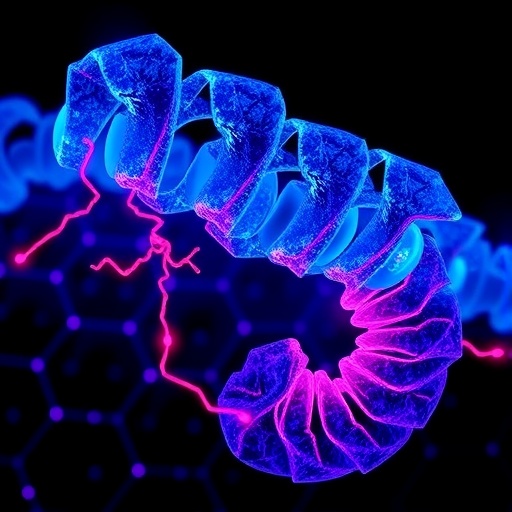SAN ANTONIO — Younger breast cancer patients who underwent axillary lymph node dissection were more likely to experience arm swelling and decreased range of arm motion than patients who received sentinel lymph node biopsies, according to data presented at the 2017 San Antonio Breast Cancer Symposium, held Dec. 5-9.
"Breast cancer is the most common form of cancer in women under the age of 40, but younger breast cancer patients are frequently underrepresented in clinical trials," said the study's lead author, Anne Kuijer, PhD, a postdoctoral research fellow at Dana-Farber Cancer Institute/Brigham and Women's Hospital, and a surgical resident at Diakonessen Hospital Utrecht, Netherlands. "As a result, little is known about optimal treatment strategies and comorbidities, such as arm swelling and decreased range of motion, in younger patients.
"These issues are of particular importance in these patients given their long survivorship period, frequently active lifestyle, and the importance of body image," Kuijer added.
Many breast cancer patients undergo axillary surgery to determine whether the breast cancer has spread to nearby lymph nodes. Traditionally, women with involved lymph nodes have undergone a more extensive axillary lymph node dissection (ALND). In recent years, studies have shown that the less invasive sentinel lymph node biopsy (SLNB) procedure is safe in selected breast cancer patients with no or limited nodal involvement upon diagnosis.
To assess the incidence of arm morbidity associated with ALND and SLNB, Kuijer and colleagues examined reports from 1,302 women aged 40 or younger who were enrolled in the Young Women's Breast Cancer Study, a multicenter prospective cohort study that was established to explore biological, medical, and psychosocial issues in young breast cancer patients. Fifty-five percent of the women had undergone an SLNB only, and 41 percent had undergone ALND. In the remaining 4 percent of patients, no axillary surgery was performed.
Kuijer and colleagues examined the incidence of patient-reported arm swelling or decreased range of motion one year after diagnosis, using criteria from the Cancer Rehabilitation Evaluation System, or CARES-SF. Overall, 13 percent of the women reported arm swelling and 40 percent reported decreased range of motion in the ipsilateral arm–the arm on the same side as the breast tumor–one year after breast cancer diagnosis.
In patients who were treated with breast conserving surgery, the incidence of arm-swelling one year after diagnosis was 6 percent in patients who underwent SLNB and 24 percent in patients who received ALND. For patients who underwent unilateral or bilateral mastectomy, the incidence of arm-swelling was 6 percent and 23 percent for patients who received SLNB or ALND, respectively.
Kuijer said she was surprised by the high rates of self-reported decreased range of motion in the ipsilateral arm one year after diagnosis; 32 percent and 36 percent in patients who received breast conserving surgery combined with a SLNB or ALND respectively, and 28 percent and 44 percent in patients who underwent unilateral or bilateral mastectomy with SLNB or ALND.
Kuijer said the study highlights the importance of de-escalating axillary treatment when appropriate in young breast cancer patients, and illustrates that even conservative surgery has long-lasting effects. "Women should be encouraged to talk to their doctors about all of their options for surgery and the expected outcomes," Kuijer said.
Kuijer noted that certain patient factors were associated with greater risk of arm morbidity. Being overweight at the time of diagnosis increased the risk for arm-swelling and decreased range of motion. "This is not something patients can influence right away at the time of diagnosis, but it highlights the overall importance of an active and healthy lifestyle," Kuijer said.
Financial status also played a part; women who described themselves as financially comfortable were less likely to develop arm-swelling. "This highlights the importance of ensuring adequate social support and resources for young patients undergoing breast cancer treatment," Kuijer added.
Kuijer noted that this study cohort included women who had been treated at some of the largest cancer centers in the Northeast. The study participants may have been of higher socioeconomic status and may have led more active lifestyles than the general population; if so, the incidence of arm morbidity in the general population may be higher. Also, Kuijer said, the study used patient-reported outcomes rather than an objective measure of arm morbidity.
This study was funded by the National Institutes of Health, the Susan G. Komen Foundation, The Pink Agenda, and the Breast Cancer Research Foundation. Kuijer and her colleagues declare no conflicts of interest.
###
Follow the meeting on Twitter: #SABCS17
About SABCS:
The mission of the 2017 San Antonio Breast Cancer Symposium is to produce a unique and comprehensive scientific meeting that encompasses the full spectrum of breast cancer research, facilitating the rapid translation of new knowledge into better care for patients with breast cancer. The UT Health San Antonio Cancer Center, the American Association for Cancer Research (AACR), and Baylor College of Medicine are joint sponsors of the San Antonio Breast Cancer Symposium. This collaboration utilizes the clinical strengths of the UT Health San Antonio Cancer Center and Baylor and the AACR's scientific prestige in basic, translational, and clinical cancer research to expedite the delivery of the latest scientific advances to the clinic. For more information about the symposium, please visit http://www.sabcs.org.
To interview Anne Kuijer, contact Julia Gunther at [email protected] or 770-403-7690.
Media Contact
Lauren Riley
[email protected]
215-446-7155
@aacr




